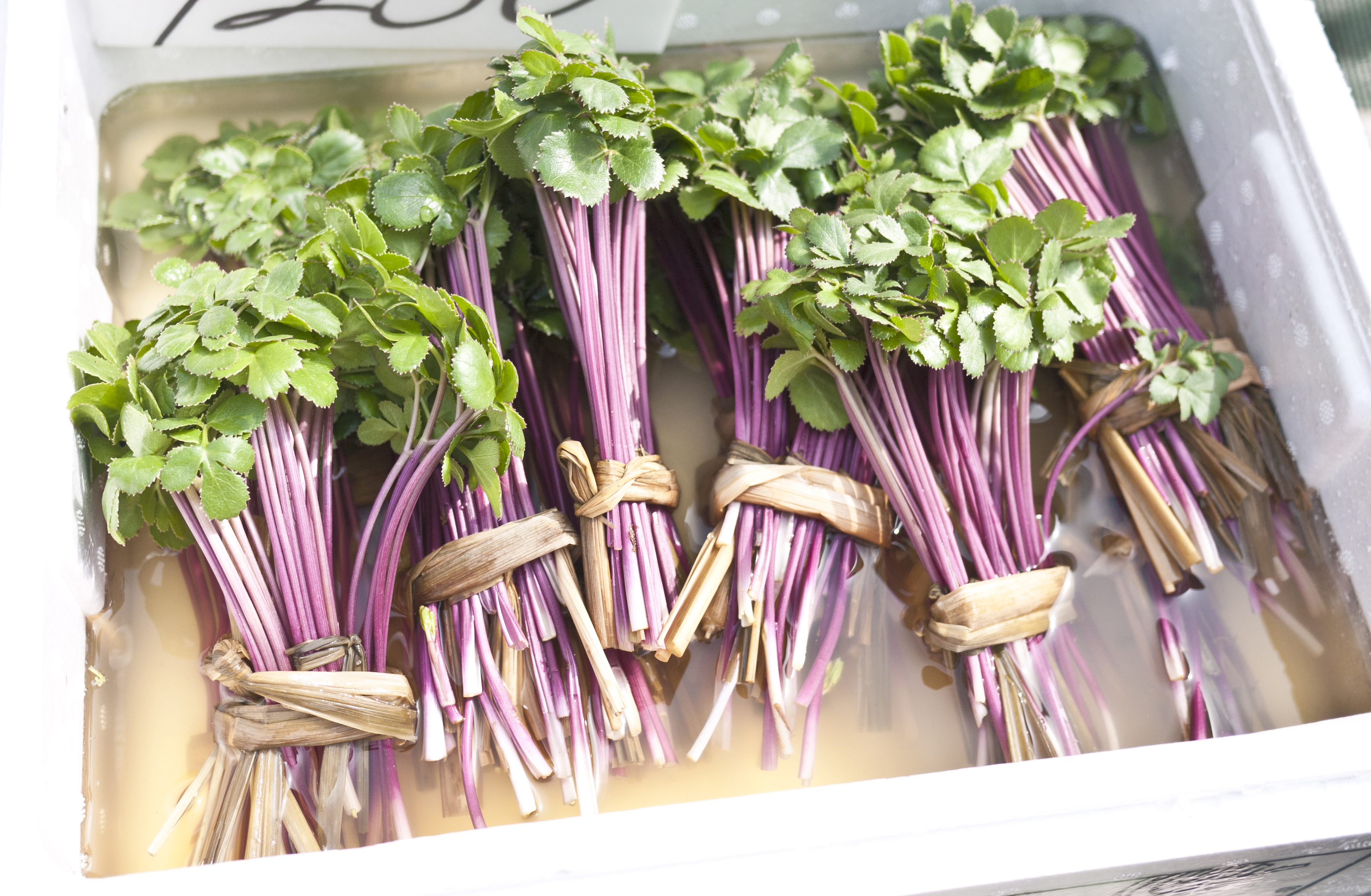The pungent green wasabi is native to Japan, as its botanical name Eutrema japonicum indicates.
A member of the brassicae family, it grows wild along the banks of mountain rivers and streams throughout the country. There are written records of it as far back as the Asuka Period (592-645), though it was used for medicinal purposes rather than food until the 13th century. A cookbook published in 1489 recommends using grated wasabi mixed with vinegar to accompany carp sashimi. (The part of the wasabi plant that's grated is not the root — it's actually the rhizome.)
Wasabi was first seriously cultivated in the early 1700s in the Utougi region, which is now part of Shizuoka City, Shizuoka Prefecture. Some of this wasabi was presented to Tokugawa Ieyasu, the first Tokugawa shogun, who fell in love with its refreshing pungency. The kidney-shaped leaves of the wasabi plant also resemble those of the aoi (asarum) plant, which make up the Tokugawa family crest.



